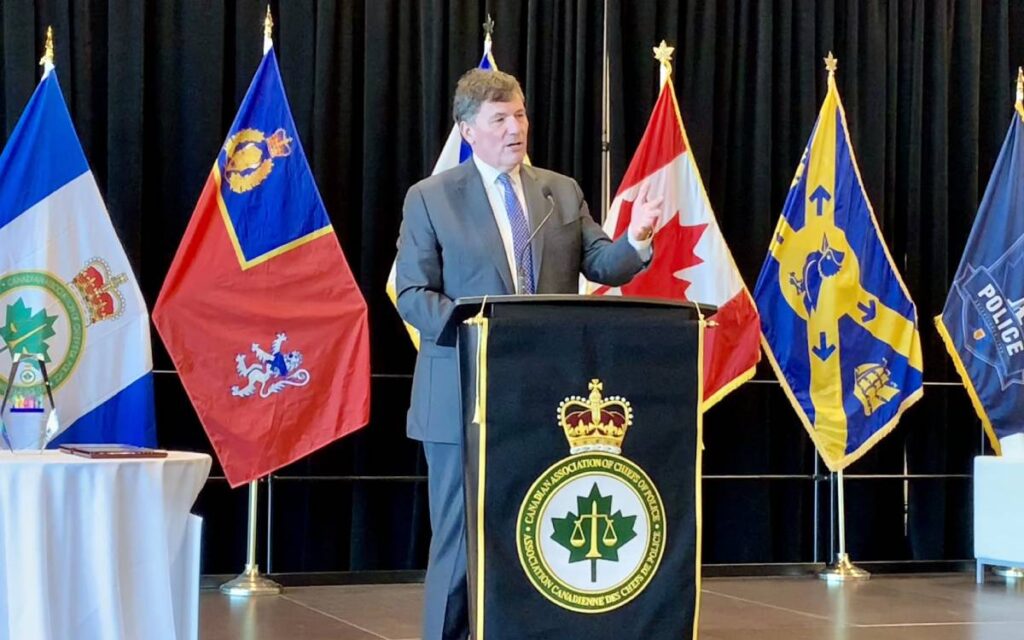
Queen’s Park’s and Ottawa’s finances are diverging. Pictured: Finance Minister Dominic LeBlanc. Photo Credit: Dominic LeBlanc/X.
If Ontario Finance Minister Peter Bethlenfalvy has any spare time on his hands, he might want to offer his new federal counterpart, Dominic LeBlanc, some after-school lessons.
There’s no way for the feds to spin this: Ottawa’s 2023-24 deficit was a disaster.
Former finance minister Chrystia Freeland set a so-called fiscal guardrail in her spring 2024 budget, pledging to hold the 2023-24 deficit (and future deficits) at or below $40.1 billion.
This was meant to assure Canadians, and investors, the feds were not letting the nation’s finances get out of control. Yet the nation learned earlier this week, in the wake of Freeland’s resignation, the feds had crashed right through that guardrail.
Her “very specific fiscal guidepost” was shattered. Instead of a $40-billion deficit, the Trudeau government turned in a $61.9-billion deficit.
That’s not a miss by inches, it’s a miss by a country mile.
What did the government in? Spending.
Last spring, Freeland said the feds planned to spend $497.5 billion. Instead, the feds spent $513.9 billion.
That’s more than $16 billion overbudget. And that’s just compared to what the feds said they would spend mere months ago.
It was a much different story when Bethlenfalvy tabled the Ford government’s numbers at Queen’s Park this fall.
Bethlenfalvy’s fall fiscal update showed the Ford government came within a hair of balancing the budget in 2023-24, the same year the feds once again broke the bank.
Ontario’s deficit came in at $600 million, $3 billion less than the government projected in its 2024 budget.
How did Bethlenfalvy do it? Prudence and spending restraint.
In the spring, Bethlenfalvy projected the government would spend $207.3 billion in 2023-24. Instead, Canada’s largest province closed out the year with $206.6 billion in spending.
That’s right: Ontario spent less than planned last year. Bethlenfalvy held the line and nearly got the province back to black. The government was also helped by lower debt interest costs due to improving credit ratings.
LeBlanc needs some tutoring from Bethlenfalvy because the Trudeau government’s own numbers show they’ll blast through Freeland’s fiscal guardrail this year as well.
The feds are now pegging the 2024-25 deficit north of $48 billion.
The deteriorating state of Ottawa’s finances isn’t happening in a vacuum. Prime Minister Justin Trudeau can’t just claim finances are deteriorating everywhere and outside circumstances must be blamed.
Bethlenfalvy’s improving numbers show governments can be prudent.
Ontario is getting its fiscal house in order. Ottawa can start to do so, too. But LeBlanc needs to follow Bethlenfalvy’s lead on spending.
If LeBlanc hopes to restore any semblance of credibility to the Trudeau government’s finances, he must post spending numbers lower than what’s projected when he tables his own budget.
Make no mistake: LeBlanc does face a task far more daunting than Bethlenfalvy did.
The Trudeau government’s fall update shows a plan for a $23-billion budget deficit five long years from now. To get Ottawa back in black, LeBlanc needs to take a page from Bethlenfalvy and go even further.
First, follow Bethlenfalvy and spend less than planned, not more.
Second, cut up the taxpayer credit card. LeBlanc should follow a pay-as-you-go system, which would force the government to cut a dollar of spending for every new dollar introduced.
If the feds hold future spending at this year’s levels, revenue growth projections show the budget could easily be balanced by 2027.
LeBlanc has a chance to flip the script and get Canada back on track. But he must be bold, stand up to Trudeau, and say no to the temptation to spend.

Jay Goldberg is the Ontario Director at the Canadian Taxpayers Federation. He previously served as a policy fellow at the Munk School of Public Policy and Global Affairs. Jay holds a Ph.D. in Political Science from the University of Toronto.




















